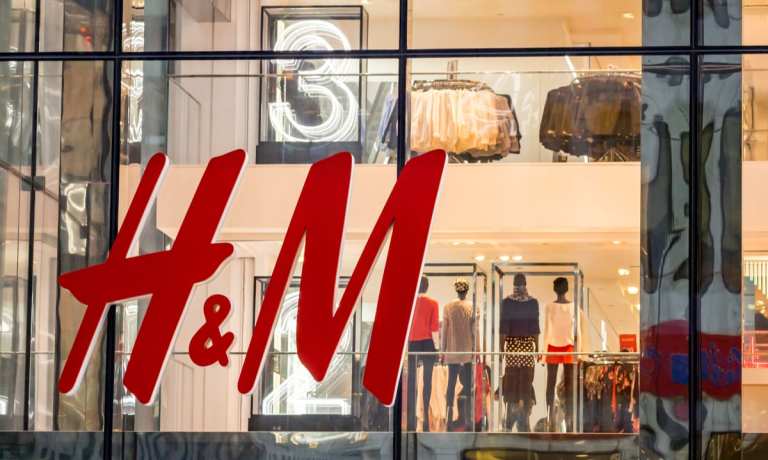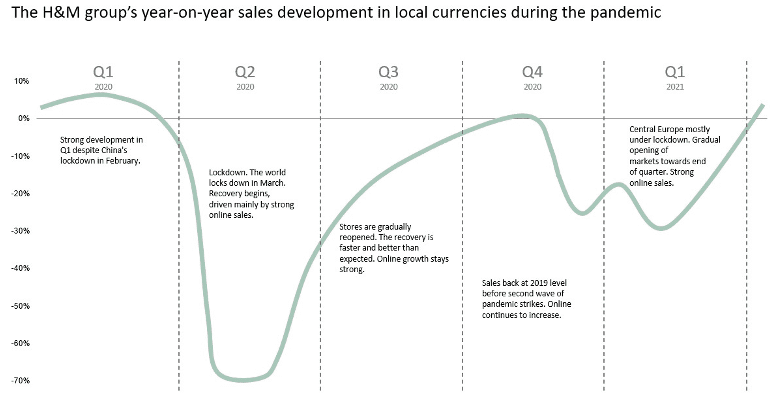
Swedish fashion retailer H&M said Monday (March 15) that 80 percent of its 5,000 global stores had currently reopened from COVID-related closures, marking a continued rebound in sales and earnings that have been battered by the pandemic.
According to the brief but unexpected announcement from the world’s second largest chain of apparel stores (behind Inditex’s Zara), sales for the three months ending Feb. 28 were down 27 percent from a year ago. The decline is slightly better than the 30 percent drop that investors and analysts had been expecting to hear when the official Q1 results are released at the end of the month.
 However, the company also said with more stores reopening daily, its sales for the first two weeks in March — the start of the company’s second quarter — were up 10 percent.
However, the company also said with more stores reopening daily, its sales for the first two weeks in March — the start of the company’s second quarter — were up 10 percent.
According to the company update, the Stockholm-based retailer had about 900 stores still closed as of this weekend after ending February — and the first quarter — with about 1,300 stores off line.
“Since the beginning of February, a number of markets have gradually allowed stores to reopen,” the H&M statement said, adding the “online sales have continued to develop very well” without giving further specifics.
The Pent-Up Demand Trend
H&M is not the first retailer to pre-release improving sales trends that are better than expected. Last week, British luxury retail Burberry issued its own optimistic 100-word “unscheduled trading update” that said its same-store sales would be up 28 to 32 percent, after falling 10 percent for trailing 12 months.
Rival fashion house Prada also made positive comments last week, as did Paris-based Hermès in February, in what analysts have called further confirmation of supportive trends for the January-to-March quarter that should bode well for the wider retail sector.
In the wake of the H&M update, RBC analyst Richard Chamberlain told Reuters he expected most stores would be open by mid-April, barring any unforeseen new lockdowns in Europe.
“As such, we see potential for a strong sales recovery in the remainder of the year, with potential for gross margin to surprise on the upside, due to the weaker U.S. dollar,” Chamberlain said.
The Digital Surge
Although H&M did not quantify the increase in its digital sales, the company has been investing heavily around the world to increase its omnichannel capabilities to keep up with rivals.
For example, last week, mid-priced casual retailer The Buckle posted an 18 percent increase in same-store sales for its latest quarter, but an 81 percent increase in online sales which accounted for about 20 percent of the total.
The week before, Gap reported a 49 percent surge in online sales versus a 5 percent dip in total revenue.
While Europe is H&M’s biggest region, it is truly a global enterprise with over 5,000 stores in 74 countries employing more than 150,000 workers.